Why do shadows seem to 'attract' each other
![]() 08/15 2024
08/15 2024
![]() 549
549
Why do shadows seem to 'attract' each other
Abstract
When an extended light source, such as the sun, illuminates two objects, causing their shadows to approach each other, it appears that one object's shadow is 'attracted' to the other's shadow. This phenomenon, known as the shadow blister effect, is primarily caused by the overlapping of the penumbra regions of the two objects due to the penumbra effect. This paper analyzes and further understands this phenomenon, supported by software simulations based on our inferences.
Keywords: Shadow blister effect; Penumbra effect; Natural light
1 Introduction
The world of optics is filled with fascinating phenomena, ranging from pinhole imaging to mirages and the Tyndall effect, each showcasing nature's complexity and beauty. However, one peculiar phenomenon has yet to receive sufficient attention: the shadow blister effect. Akin to a blurred bubble effect, this phenomenon manifests as strange changes in the shadows cast by two objects under illumination.
Specifically, when two objects, a and b, are exposed to sunlight or other extended light sources, and if object a moves closer to object b, observers may notice a curious occurrence: object a's shadow appears to protrude towards object b's shadow. This visual phenomenon is easily observable under sunlight. For instance, when a person stands next to a building and moves their hand towards the building, as their shadow nears the building's shadow, the hand's shadow seemingly bulges towards the building's, creating an illusion of attraction between shadows. This effect can also be seen indoors, with the shadows of one's head and window sill exhibiting a similar 'attraction' as they approach.
This prompts curiosity about the scientific principles behind this strange phenomenon. The shadow blister effect likely involves complex optical interactions, including light refraction, scattering, and shadow formation. As shadows cast by objects under light illumination undergo subtle changes, they can lead to visual illusions of interaction between shadows.
Furthermore, we cannot overlook the potential role of psychological optical illusions in this phenomenon. People's perception of shadow and light changes may be influenced by other visual factors, resulting in an illusion rather than a true physical phenomenon. Thus, understanding the shadow blister effect necessitates not only an examination of optical principles but also consideration of the unique characteristics of the human visual system.
In our scientific exploration, we may uncover the secrets behind the shadow blister effect, explaining why shadows exhibit such captivating visual effects under specific conditions. This phenomenon is not merely an optical marvel but also an opportunity to delve deeper into the interaction between light and matter. Through in-depth study of the shadow blister effect, we can broaden our understanding of the optical world and uncover hidden wonders in daily life.
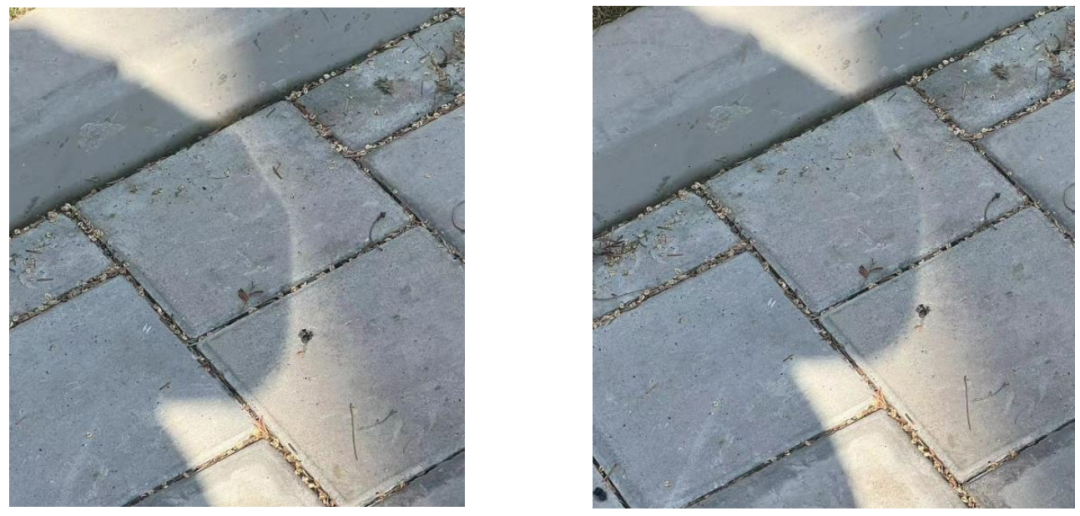
Figure 1: The phenomenon of shadows seemingly 'attracting' each other
2 The Shadow Blister Effect
Having established an understanding of the shadow blister effect, we now delve into its causes. Two primary theories exist regarding its origin: diffraction of light and the penumbra effect.
Firstly, considering diffraction of light, it refers to the deviation of light from its straight-line path when encountering obstacles or apertures, causing it to spread out behind the obstruction (as illustrated in Figure 2). While this theory seemingly explains the shadow blister effect, suggesting that sunlight bending around objects creates the illusion, closer examination reveals limitations.
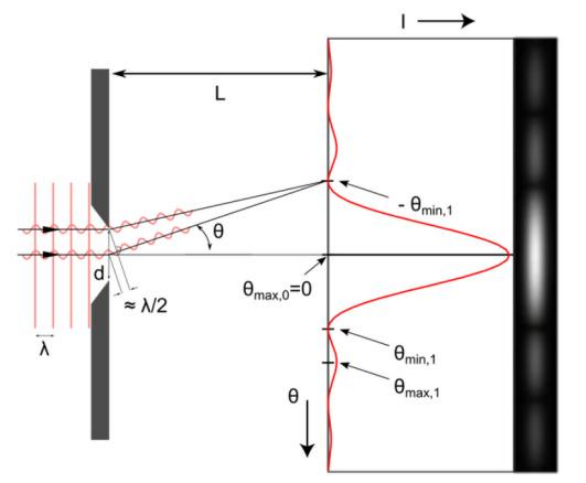
Figure 2: Diffraction of light
However, when considering shadows cast by two objects under sunlight, it's crucial to note that natural light wavelengths primarily range from 300 to 1100 nanometers, peaking at around 500 nanometers (as shown in Figure 3). The observed 'attraction' between shadows is visible to the naked eye and occurs on a centimeter scale, a significant difference of five orders of magnitude from the wavelength scale. Thus, diffraction is not the primary cause of the shadow blister effect, though it doesn't exclude the possibility of diffraction under sunlight.
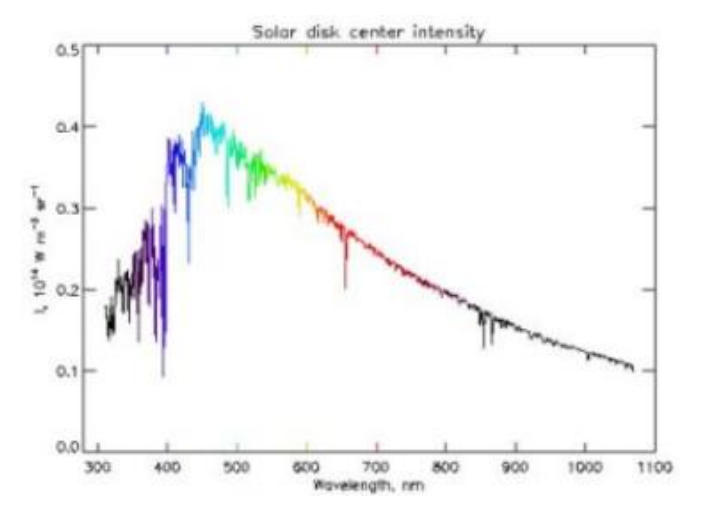
Figure 3: Natural light wavelength range
The second theory, the penumbra effect, stems from the fact that common light sources, including sunlight, candles, and desk lamps, are not ideal point sources. They have finite sizes, casting shadows with umbra (fully shaded) and penumbra (partially shaded) regions (as depicted in Figure 4). The umbra, fully obscured by the object, appears darkest, while the penumbra, partially obscured, appears dimmer, creating a gradual transition.
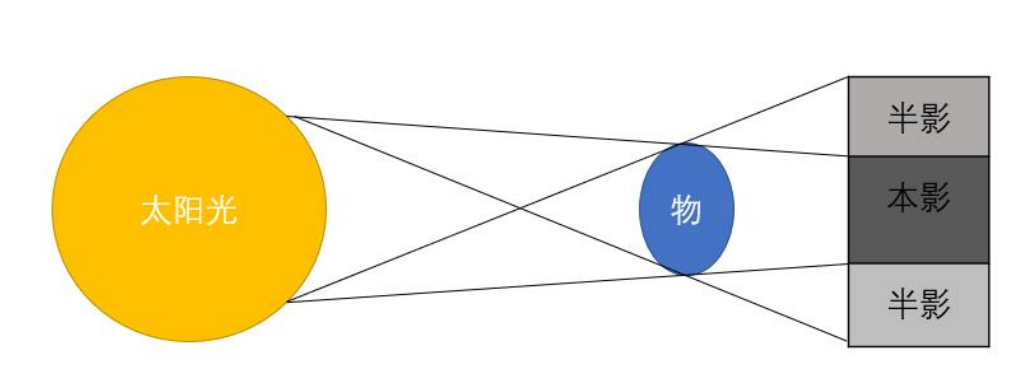
Figure 4: The penumbra effect
Given the sun's angular diameter slightly exceeds 0.5° at Earth's surface, the penumbra width of an object 1 meter tall is approximately 1 centimeter. As two objects approach each other, their penumbra overlap, creating a darker overlap area that gradually resembles the umbra. This results in the illusion of 'attraction' between shadows.
While the above explanation may not fully grasp the counterintuitive nature of shadow 'attraction' (as seen in Figure 5), it's essential to understand that brightness changes in overlapping penumbra are nonlinear, and the human eye has a higher threshold for shadow darkness compared to the umbra. Consequently, as shadows approach, the perceived 'umbra' moves faster than the actual umbra [4][5].
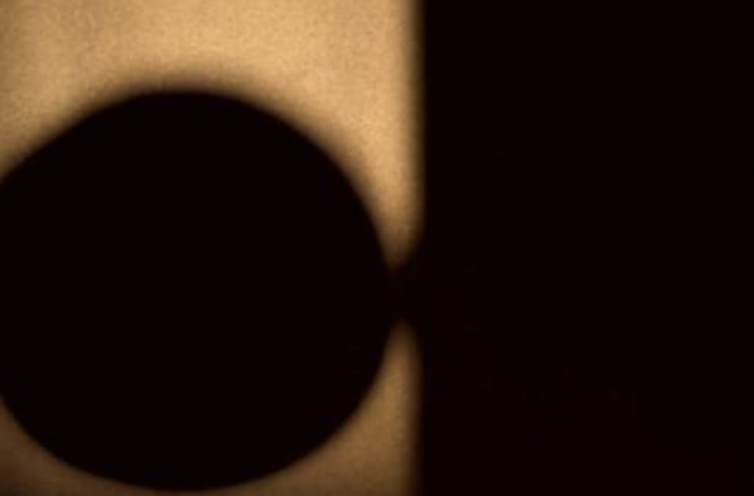
Figure 5: Shadows seemingly 'attracting' each other
Having grasped the primary cause of the shadow blister effect, we can replicate it using existing software. In Photoshop, the 'Curves' tool simulates the blurred image caused by the penumbra (as shown in Figure 6).
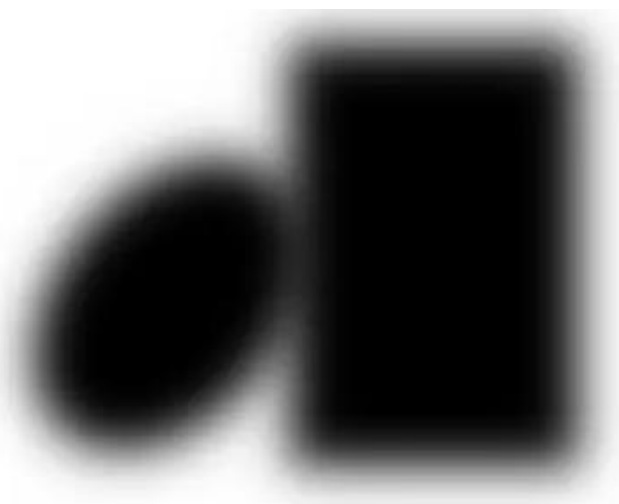
Figure 6: Object image
As mentioned, the human eye responds nonlinearly to light intensity, automatically adjusting to high contrast objects for clearer vision. Bright areas are perceived as overexposed, while dark areas are treated as noise. Intermediate intensities follow an S-shaped curve (as illustrated in Figure 7), resulting in the shadow blister effect observed in real life (Figure 8).
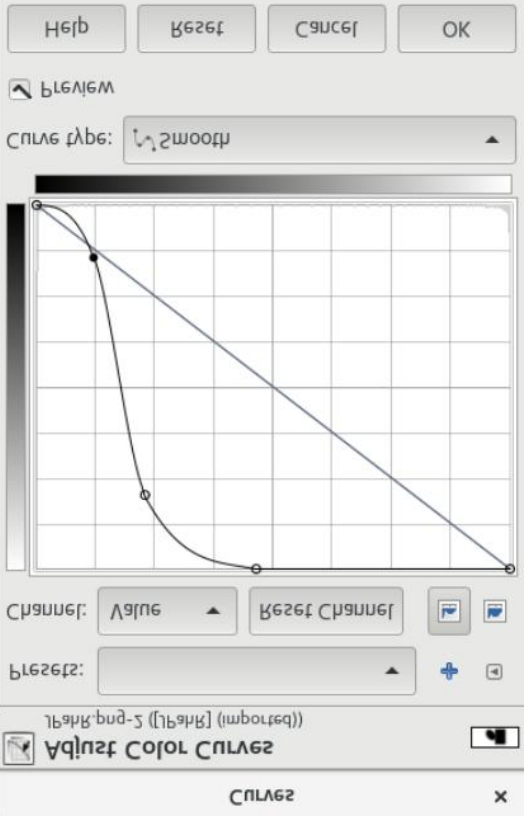
Figure 7: Processing curve

Figure 8: Simulation result
3 Conclusion
Based on our analysis, shadows cast by two objects illuminated by non-point light sources like sunlight, streetlights, or flashlights exhibit the shadow blister effect as they approach each other. This phenomenon isn't caused by light diffraction but primarily by the penumbra effect, where overlapping penumbra darken, resembling the umbra. Coupled with the human eye's nonlinear response to light intensity, this creates the counterintuitive illusion of shadow 'attraction'.
References[1]. Lock, James A. "Ray Theory Analysis of the Shadow Blister Effect." Applied Optics 37 (1998): 1573-1578.[2]. M. Minnaert, The Nature of Light and Color in the Open Air (Dover, New York, 1954), pp. 3–7.[3]. D. K. Lynch and W. Livingston, Color and Light in Nature (Cambridge U. Press, Cambridge, 1995), pp. 1–19.[4]. F. M. Du Mas, “A new visual illusion,” Am. J. Psychol. 66,142–143 (1953)[5]. J. R. Trotter, “The geometrical optics of the blister effect,” Vision Res. 6, 587–596 (1966).







